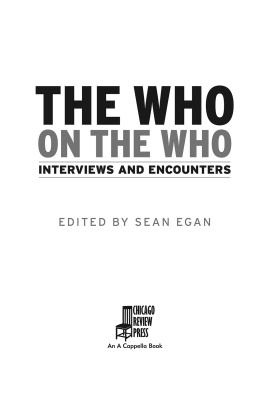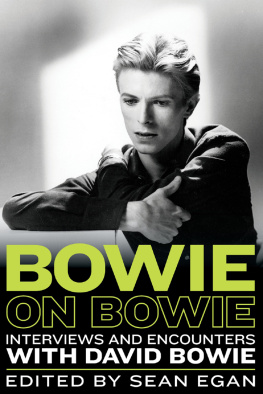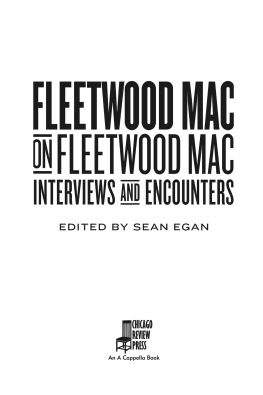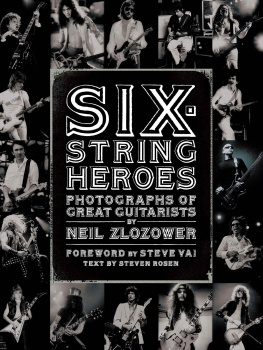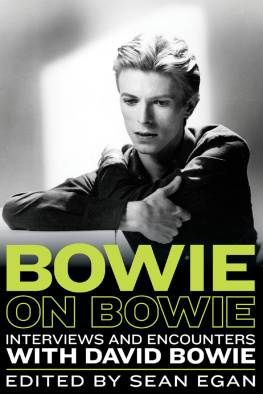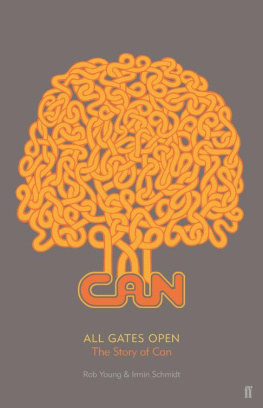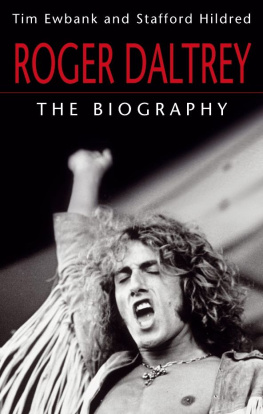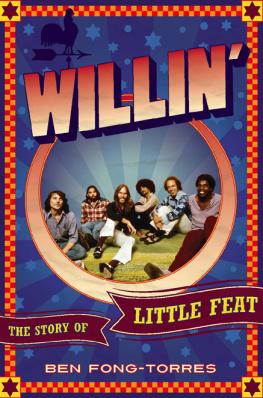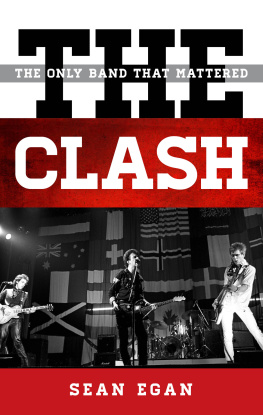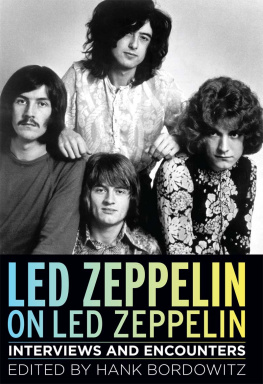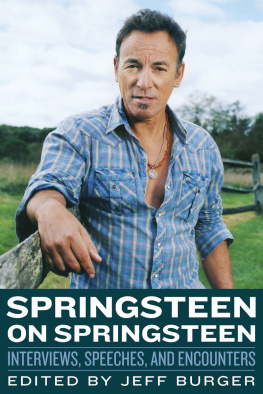A list of credits and copyright notices for the individual pieces in this collection can be found on pages 391392.
INTRODUCTION
When the Who announced that their 20142015 tour was the beginning of the long goodbye, they served notice that popular music was losing one of its titans.
The Who were a mass of contradictions. They created the anthem of their generation but were loved by audiences not even born when they started. They brought intellect to rock but were the darlings of snotty punks. They were the quintessential studio act yet were also the greatest live attraction in the world. The most striking of the dichotomies underpinning their story, however, is the contrast between the way they meshed on stage and their lack of personal chemistry offstage. Aside from primarily hailing from West London, they had nothing in common. As their lead singer Roger Daltrey once observed, I dont want to be in a group with anybody else, although if I could choose three friends to go about with it wouldnt be those three.
Drummer Keith Moon was a clown whose buffoonery often tipped over into wanton acts of demolition, even self-destruction. When he was behind his giant kit, though, his disturbing desperation for attention was channeled in a benign direction: Moons blurred virtuosity was astounding.
Moons partner in the rhythm section could not have been more of a contrast. Nor could John Entwistles brutal, belligerent bass style be more sharply juxtaposed with the person purveying it. Having said that, his reputation as the Quiet One was overplayed: he was a hedonist literally until the moment he died.
Guitarist Pete Townshends prominent nose gave him a very peculiar look for a pop idol of the era. Behind that odd exterior was a ferocious intellect and an extraordinary talent. Although initially hesitant about songwriting, by the end of the sixties his compositional gifts hadbanal phrase, but truechanged the world.
Fronting all of this was Daltrey. Roger Daltrey wasto use a Britishismstroppy. He was overconfident in the manner of many men who are both good looking and able to handle themselves in a fight. He was also, however, a vocalist of exquisite sensitivity, interpreting Townshends visions in alternately roaring and tremulous fashion. Moreover, as Townshends concepts became ever more cerebral, it was Daltrey who sustained a working-class grit within the ensemble.
Despite being bound together only by the knowledge that they needed each others skills, the Who weaved a magical collective spell.
Even when in the early seventies they abandoned their auto-destruction, they remained the most exciting spectacle in rock. Moon mugged, grimaced, tossed his sticks, and affected posh voices even as he played both ferociously and professionally. Entwistle stood looking like he was waiting for a bus as he peeled off bass lines whose qualities few alive could hope to match. Townshend leapt, flailed, and dramatically windmilled his playing arm. Daltreyincreasingly resembling Michelangelos Davidstrutted the stage with his blond locks tumbling to the shoulders of his buckskin jacket as he twirled his microphone lead like a cowboys lasso.
Release-wise, the Who were neither prolific nor consistent. When on form, though, their genius was indisputable. Their 1965 single My Generation was a rampaging, galvanizing call to arms that perfectly summed up the feelings of the young at a point when an unprecedented chasm lay between the values of the age groups. The string of singles that followed My Generation brought to the UK charts with wit and melodicism subjects no one else dared to essay, including self-loathing (Substitute), enforced transvestitism (Im a Boy), and image-assisted masturbation (Pictures of Lily).
In May 1969, the Who unleashed an album underpinned by a concept the depth of which popular music had never seen. Their previous two LPs had ended with mini-operas, but Tommya double set when they were still rarewas an album-long narrative centered around disability, child abuse, and messianic cults, with a little whimsy thrown in in the form of a pinball strand. I always felt sick that rock was looked upon as a kind of second best to other art forms, Townshend later said, that there was some dispute as to whether rock was art. Townshend changed all that. Tommy not only raced up the charts but also garnered coverage in conservative areas of the media that were amazed to find that rock could be something more than incoherent and primitive.
The bands follow-up was a complete contrast. Live at Leeds (1970) was an in-concert recording whose abrasive virtuosity made it as influential on the development of the nascent heavy metal medium as the LP debuts of Led Zeppelin and Black Sabbath.
Whos Next (1971) was the remains of Townshends next intended opus, a double concept album called Lifehouse. Following a torturous development, producer Glyn Johns persuaded Townshend to cut it down to a single LP consisting of what Johns considered to be the best Lifehouse songs, sequenced with complete disregard for original narrative purpose. The result was, quite unforeseeably, one of the dozen greatest albums ever made, then or now. The highlight was Wont Get Fooled Again, an eight-and-a-half-minute barnstorming epic that provided a disillusioned bookend to the defiance of My Generation. It struck a profound chord in lamenting of the sixties hangover: Nothing in the street looks any different to me.
If Whos Next was the last long-playing Who masterpiece, it could never be said that their subsequent releases were not well-crafted and thoughtful, particularly the lavish tribute to their original mod fanbase Quadrophenia (1973) and the self-doubting Who by Numbers (1975). Moreover, on individual tracks they periodically proved they still had it: the beautiful Love, Reign oer Me, the saucy, infectious Squeeze Box, and the sweaty, self-loathing Who Are You were patently neo-Who classics.
As well as proffering great spectacle and supreme audio experiences, the Who provided great copy. During the sixties and seventies, Townshend was a de facto spokesman for rock royalty. Messianic about contemporary popular music and its central importance in the lives of young people, especially those young people determined to change the world, he was in the habit of giving to the music press sprawling interviews in which he alternately celebrated and deplored what he saw in the scene. Several of these interviews have come to be considered classic documents of the age.
Moreover, the chalk-and-cheese Daltrey and Townshend seemed to feel more comfortable conducting dialogues in the press than face to face. It was fascinating to follow the back-and-forth as the guitarists comments on the Whos career were repudiated or contradicted in print by his colleague, using the kind of blunt phraseology for which Daltrey is known. Moon and Entwistle joined in, in their respective inimitable styleslunatic and lugubrious. Even when the Who were nonoperational or past their peak, their interviews continued to be as (or even more) compelling: changes in allegiances and social mores left the band members freer to talk about sex, drug-taking, business, and in-fighting, while changes in individual perspectives saw them discuss past behavior, stances, and recordings in a different light.

